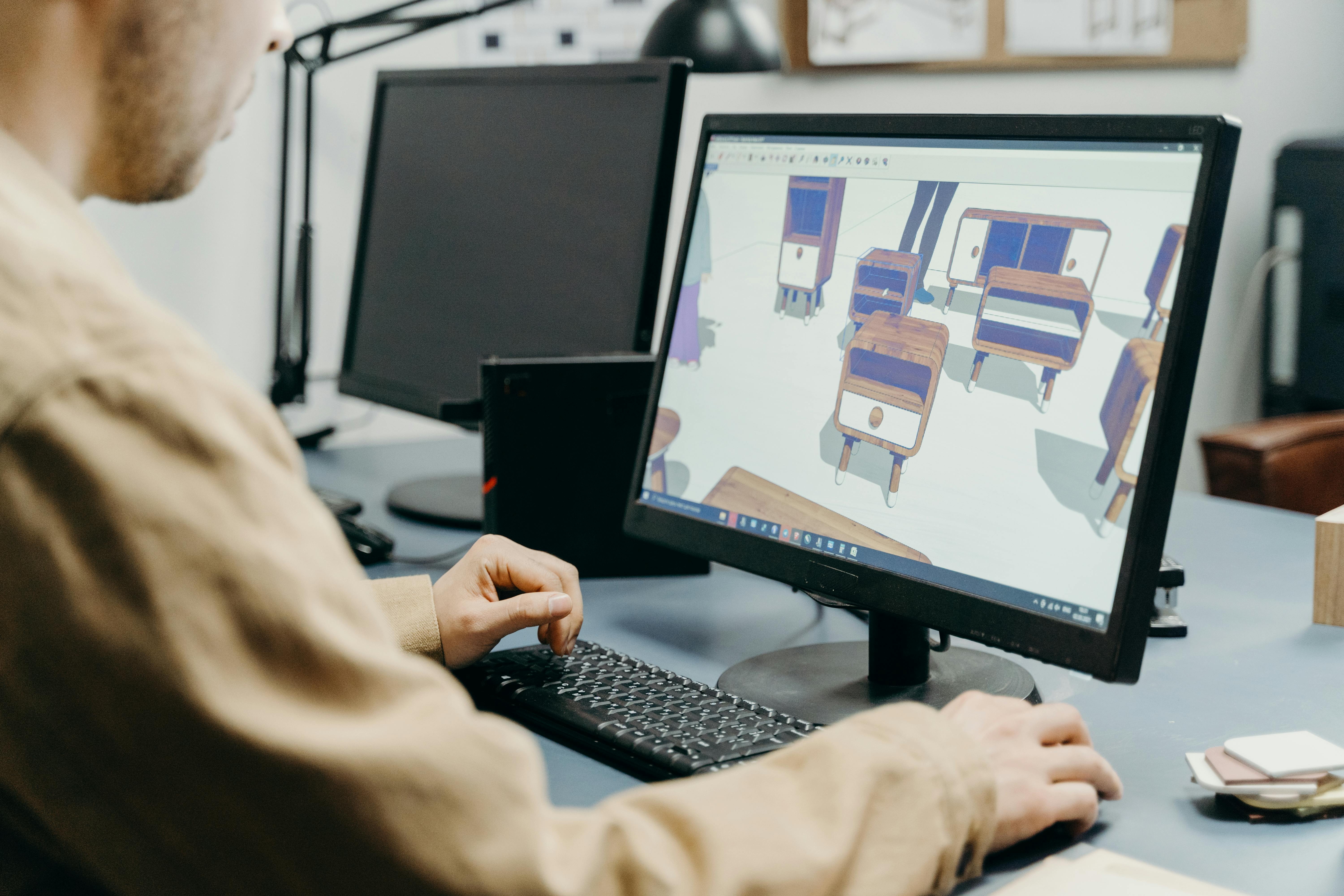From TikTok DIYs To Online Shopping: How Tech Is Transforming Interior Design
Interior design is undergoing a radical transformation in the digital age. For starters, designers now have a vast array of tools at their disposal to integrate smart solutions into interior design.
Author:George EvansMay 12, 202423.4K Shares670.8K Views

Interior design is undergoing a radical transformation in the digital age. For starters, designers now have a vast array of tools at their disposal to integrate smart solutions into interior design. Research shows that this design philosophy has the potential to conserve global resources, with key components of smart design, such as building management systems, offering effective means of governing interior systems like lighting and temperature.
This capability contributes to a more sustainable interior design industry, transforming how people realize their living spaces. But that’s not the only shift happening in the industry. From the explosion of inspiration on platforms like TikTok to the seamless convenience of online shopping and the immersive experiences offered by virtual reality, so many forms of technology have become indispensable tools in the modern interior design arsenal. Let’s take a closer look below.
Recent developments in the field of interior design
At the forefront of this revolution is the democratization of design through the rise of different social media platforms. Image-based platforms such as Tumblr or Pinterest have long amplified interior design trends and aesthetics. However, in the age of video content, almost anyone can now go viral on TikTok with the right hashtags, allowing users to spread inspiration, mood boards, DIY tutorials, and even “starter packs” online. Now, labeled trends such as “cottage-core” or “night luxe” are reduced to marketable décor through bite-sized DIY tutorials, helping aspiring designers and homeowners to personalize their homes like never before.
Beyond social media, the digital age has also brought the rise of e-commerce, transforming the way people shop for home decor and furnishings. Today, purchasing home furniture online is as easy as a few clicks. With online platforms, consumers can explore a vast array of options by department, brand, material, color, style, or even designer! Living Spaces is a notable site for this; users trying to shop for dining room sets with bench and chairscan easily use filters to find their ideal pieces, like the Vanya set for eight, the Catania set in a modern design, or the Titan for fans of faux concrete. Moreover, these sites allow buyers to compare prices, read reviews and decor tips, and schedule free shipping or pickup, all from the comfort of their homes.
To further help clients make informed purchases, online retailers also leverage reality technology. Cryption founder David Azar explains that augmented reality imbues a real-life settingor object with digital elements, allowing you to see a three-dimensional visual of a sofa as it would look in your living room. Meanwhile, virtual reality can be likened to a digitally constructed 3D environment, akin to the blueprint of a house before it's physically constructed. Designers and architects are creatively incorporating both methods into their work as current nascent solutions are powered by cutting-edge software platform systems such as Blender and Unreal Engine.
What to expect in the future?
Reality tech additionally opens new possibilities for collaboration and communication among designers, clients, and other stakeholders. Remote meetings and design presentations can now take place in virtual environments, allowing for real-time feedback and iteration regardless of geographical location. On that note, expect the reality tech experience to also become a standard client expectation in the coming years as augmented and virtual reality technologies continue to evolve. Clients will increasingly be able to virtually visualize how different design elements will look in their homes before making decisions, whether it's selecting furniture, choosing paint colors, or redesigning entire rooms.
Moreover, the impact of 3D printing technology on home construction cannot be overstated. You can read our custom home construction revolution trends article, but to recap, we talked about how entire structures and intricacies of interior design elements can be efficiently printed. From custom fixtures to intricate decorative accents, 3D printing technology offers homeowners and designers an unparalleled level of flexibility in customizing homes.

George Evans
Author
George Anderson, an exceptional architectural designer, envisions and brings to life structures that transcend the realm of imagination. With an unwavering passion for design and an innate eye for detail, George seamlessly blends form and function, creating immersive spaces that inspire awe.
Driven by a deep appreciation for the interplay of space, light, and materials, George's innovative approach redefines the possibilities of architectural design. His visionary compositions leave an indelible mark, evoking a sense of wonder and transforming the built environment.
George Anderson's transformative designs and unwavering dedication continue to shape the architectural landscape, pushing the boundaries of what is possible and inspiring generations to come.
Latest Articles
Popular Articles